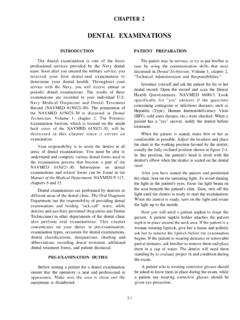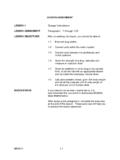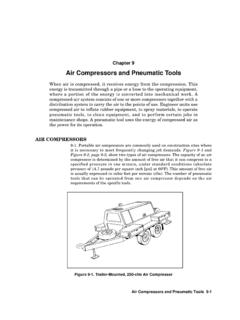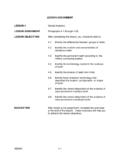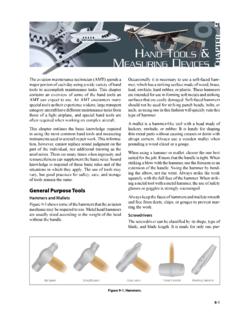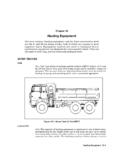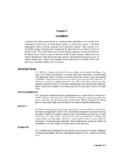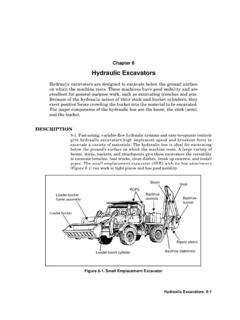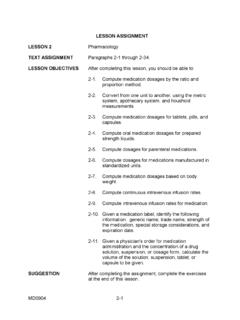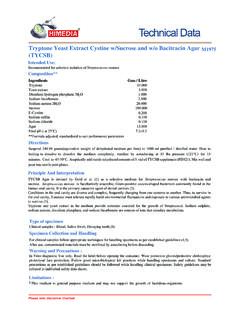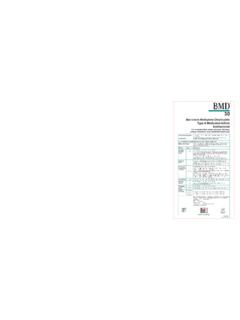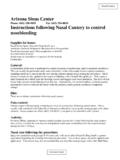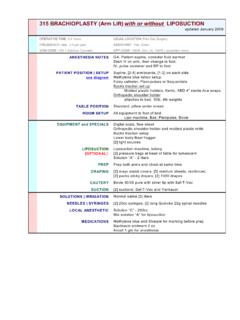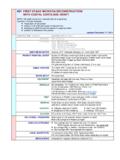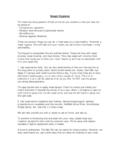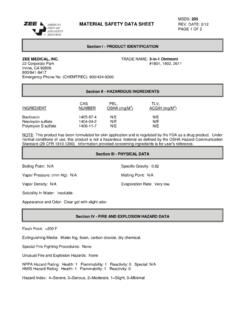Transcription of LESSON ASSIGNMENT LESSON 6 Drugs Used to …
1 MD09136-1 LESSON ASSIGNMENTLESSON 6 Drugs used to Prevent and Treat Infection IILESSON ASSIGNMENTP aragraphs 6-1 through 6-38 LESSON OBJECTIVEUpon completion of this LESSON , you should be able todiscuss actions, uses, untoward effects, administration,cautions, and contraindications of commonaminoglycosides, sulfonamides, antifungals, anti-malarials, and anthelmintics, as well as metronidazoleand gamma benzene studying the ASSIGNMENT , complete the exercisesat the end of this LESSON . These exercises will help youto achieve the LESSON 6 Drugs used TO PREVENT AND TREAT INFECTION IISection I.
2 Aminoglycosides, a group of antibiotics including streptomycin, neomycin,gentamicin, and kanamycin, are similar in mode of antimicrobial action, toxic effects,pharmacology, and Streptomycin is a narrow-spectrum antibiotic used for thefollowing organisms:(1) Mycobacterium tuberculosis.(2) Yersinis pestis (bubonic plague).(3) Francisella tularensis (tularemia).(4) Other organisms of known Dosage.(1) For tuberculosis--1 gram, given once daily, usually in combination withother Drugs .(2) For tularemia--1 to 2 grams daily in divided doses for 7 to 10 days.
3 (3) For plague--2 to 4 grams daily in divided doses.(4) For severe fulminating infections caused by known sensitive organisms,usually in combination with other antibiotics.(a) Adult--2 to 4 grams daily, given in divided doses every 6 to 12hours.(b) Child--20 to 40 mg/kg of body weight, in divided doses every 6 to12 :This drug is given intramuscularly and Warnings.(1) This drug should be used cautiously in pregnant women because of thefact that it can cross the placenta and cause ototoxicity (see d (1) below) in the fetus.(2) Baseline audiometric tests should be run initially prior to therapy andthen frequently during therapy to guard against Reactions.
4 (1) Ototoxicity. Ototoxicity is toxicity to the eighth nerve possibly resulting indamage to hearing and the sense of balance. Initial signs may include vestibulardamage causing nausea, vomiting, and vertigo. Other symptoms include tinnitis, roaringnoises, or a sense of fullness in the ears. Hearing loss, often permanent, may frequency and severity of ototoxicity are proportionate to the age of the client, thedosage level, and the duration of administration.(2) Other Reactions. Other common adverse reactions include parathesia(abnormal sensation) of the face, rash, fever, urticaria, angio-neurotic edema, andeosinophilia.
5 Allergic reactions occur most frequently with prolonged contact, either inclients with a long course of therapy or in medical personnel administering the drug ;personnel preparing streptomycin solutions should wear gloves.(3) Superinfection. Superinfection may Streptomycin sulfate is supplied in 1-gram quantities of powder,which must be reconstituted before injection. Streptomycin sulfate injection, , is supplied in cartridge-needle SULFATE Kanamycin (Kantrex) is a broad-spectrum bactericidal of its potential for toxic side effects, its use is limited mainly to certain seriousgram-negative infections.
6 It should not be used when less toxic anti-infective agents areavailable. It is effective in the treatment of E. coli, Proteus species, Enterobacteraerogenes, Klebsiella pneumoniae, Serratia marcescens, and Mima-Herrelea. Althoughkanamycin is not the drug of choice for staphylococcal infections, it may be indicatedunder certain conditions for the treatment of known or suspected staphylococcaldisease. These situations include:(1) The initial therapy of severe infections where the organism is thought tobe either a gram-negative bacterium or a staphylococcus.
7 (2) Infections due to susceptible strains of staphylococci in clients allergic toother less toxic (3) Mixed staphylococcal and gram-negative The usual dose is mg/kg of body weight, IM every 12hours. The average daily adult dose is gram.(1) Uncomplicated infections of sensitive organisms should respond in 24 to48 hours. Should no improvement be seen in 3 to 5 days, therapy should be stoppedand bacterial sensitivity rechecked.(2) Partially used vials should be discarded after 48 hours, and kanamycinshould not be physically mixed with other anti-infective and Warnings.
8 (1) Prior to and during therapy, audiograms should be obtained on clientswith kidney dysfunction if therapy is to last more than 5 days.(2) Kanamycin therapy should be stopped if client complains of tinnitus orhearing loss.(3) Clients should be well hydrated to prevent chemical irritation to the renaltubules. Concurrent use of kanamycin and potent diuretics, such as furosemide andethacrynic acid, should be avoided.(4) Concurrent administration of kanamycin and other potentiallynephrotoxic and ototoxic Drugs should be avoided.(5) Safety in pregnancy has not been established.
9 (6) Renal function should be checked prior to and during therapy. Ifazotemia or oliguria occurs, therapy should be discontinued.(7) Bacterial or mycotic superinfections may occur with therapy.(8) Allow for complete recovery from anesthesia and muscle relaxantsbefore intraperitoneal instillation to avoid neuromuscular paralysis with Reactions.(1) Pain or irritation may occur at the site of injection.(2) Eighth cranial nerve damage, affecting mainly hearing, may beirreversible. In some clients, this hearing loss may not be detected until after therapy has been discontinued.
10 Nerve damage is more likely to occur in clients with (3) Renal function impairment with nitrogen retention and proteinuria canoccur during kanamycin therapy, especially in clients with pre-existing kidney damage.(4) Neuromuscular paralysis with respiratory depression has been reportedfollowing parenteral or intraperitoneal Kanamycin sulfate injection, for pediatric use, issupplied in 2-ml units. The preparation for adult use, 333-mg/ml, is supplied in SULFATEa. Gentamicin sulfate (Garamicin) has the same general uses and warnings askanamycin (above).
